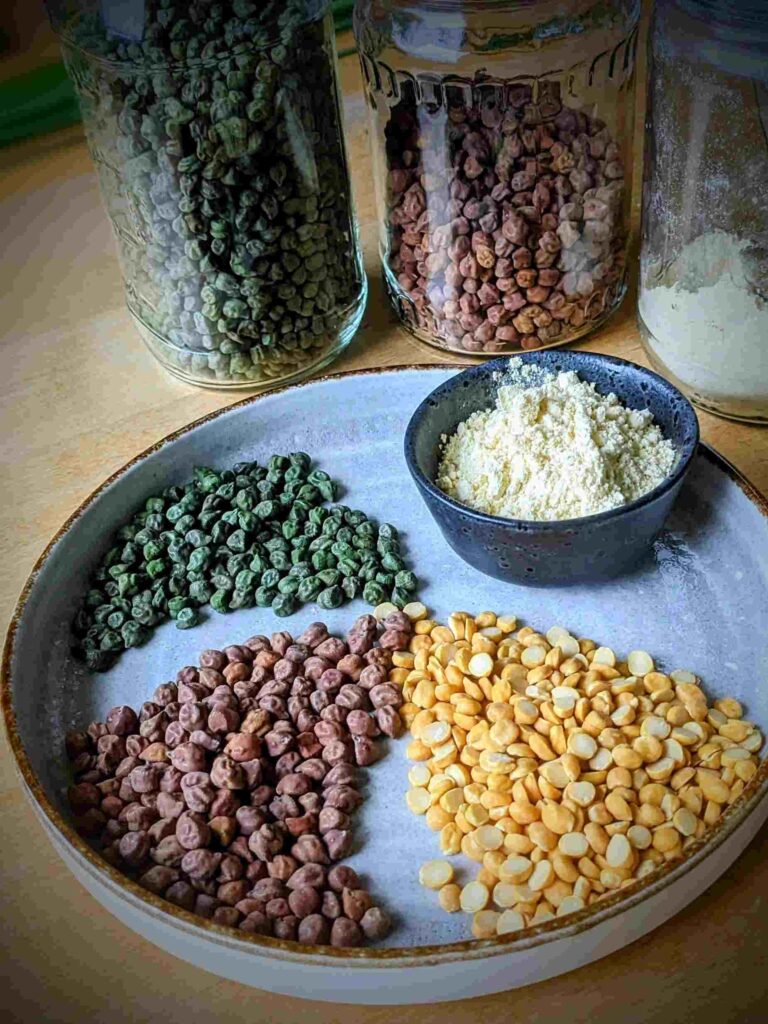
The growing trend towards being a vegan and vegetarian, protein-rich chickpeas have become an unmistakable part of the global diet. The Indian brown-skinned chickpea Chana, is known to have one of the highest protein contents. India has a very large population of vegetarians, wherein for ages, chana and chickpea flour called besan- are an inherent part of our daily diets. The number of recipes using chana and besan in the Indian culinary culture is amazing. Soaked or sprouted, whole beans or split, called chana dal, or ground to flour as besan, the recipes using chickpeas are numerous!
The repertoire consists of various curries, pancakes, savoury bakes, fritters, fermented batters, soaked and raw in salads or in chutneys. The combinations are delicious and enticing. This is a story of one recipe from Maharashtra PITHLA, that unravels the nuances in the characterization of Maharashtrians in the different areas within one state!
What is Pithla?
Made from besan the chick pea flour, Pithla is cooked with barely a few ingredients, and ready in 5–10 minutes. Maharashtra can deliver Pithla as a sauce for rice or as a sturdy dish in many variations, to be eaten with flatbreads like chapati or bhakri.
Pithla, is one of the simplest recipes a beginner can cook and never go wrong. This recipe can be rustled up at the last moment for surprise guests, or it is the “go-to” for a lazy or tired cook. But the bottom line is: people love its hearty addictive taste as well as benefit from its ease of cooking. From the Maharashtrian millionaires to the poorest of labourers, Pithla is an all-time favourite and a dish that unites them all. It has thus become a quintessential Maharashtrian culinary identity.
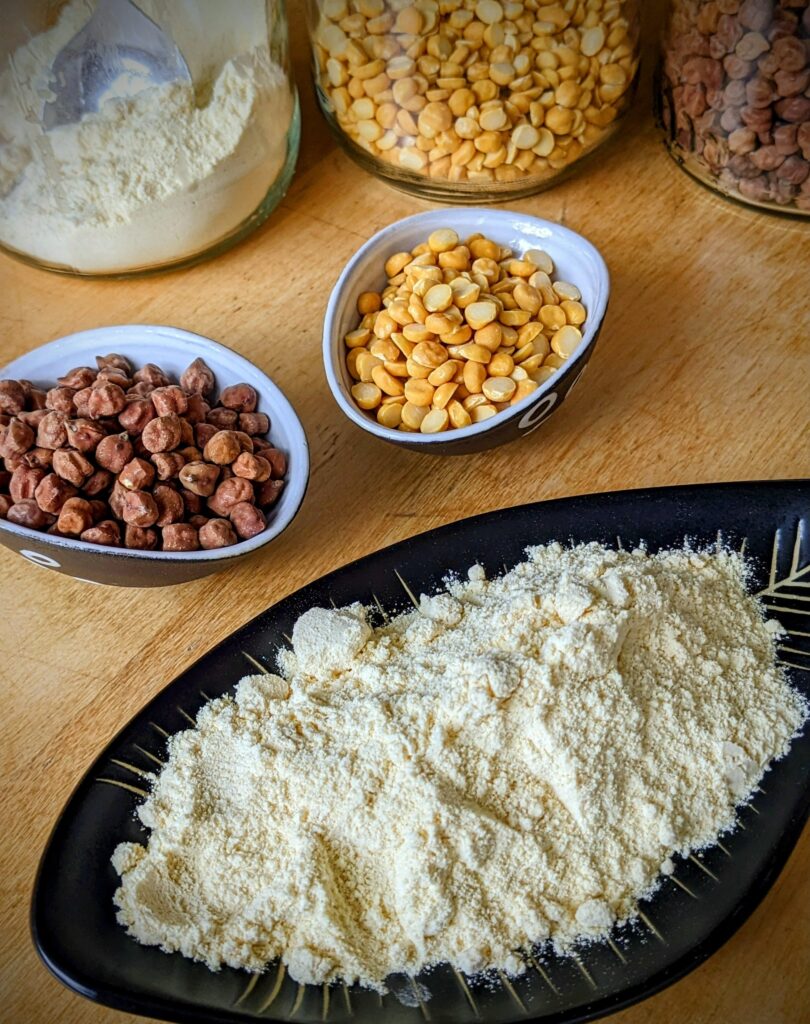
The basic Pithla recipe:
A tadka, Maharashtrians call this Phodni, in hot oil with mustard or cumin seeds and hing (asafoetida) to counteract the windy character of chickpeas. An option is to add chopped onion or not, turmeric powder, some water, and bring to a boil. Then add the besan slurry made with ¼ cup besan + ½ cup or more, water or sour buttermilk, whisked well, so that no lumps form. Add salt, plus slit green chillies or chilli powder to taste. Cover and simmer for 5–7 minutes. Ready in a jiffy, Pithla is always served hot.
A few variations follow hereafter, accentuating the essential characteristics of the various communities across Maharashtra that cook this recipe in their style.
Accompaniments to Pithla: Hot rice, whole wheat poli (chapati) or millet bhakris. Ghee is a must for many Pithla lovers. A spicy, dry red peanut and garlic chutney or flaxseed chutney. Better still, a Thecha or Kharda, made of pan or flame roasted green chillies and garlic cloves, then pounded in a mortar and pestle with the addition of sea salt to a coarse texture. A small white or red onion, smashed with your fist and served on the side.
My journey into the many variations of Pithla.
As a child, I hated Pithla. My ex-husband is a renowned artist, a full-blooded Maharashtrian, who wholeheartedly loved Pithla, and could eat it nearly every day if I served it. Living in Pune, with a Bohemian lifestyle, we had an unending footfall of artists, filmmakers, authors, actors, poets, publishers and critics in our open house! So, there I was cooking up a kadhai full of yummy Pithla at midnight for those post-performance, hungry theatre personalities, or surprise visitors dropping in late night. This enabled me to supplement whatever I had cooked earlier and stretch the meal to accommodate the new arrivals. Since, of course, one’s culinary reputation is always at stake, it had to be top quality. In the process, I became a versatile Pithla cook and convert within a year of my marriage!
Along the way, from all these creative people, or their spouses, I discovered numerous regional Pithla specialties’ cooked by different communities within Maharashtra. Being a large state with different climatic plus agricultural zones and cultures, it was a revelation, that the way Pithla is cooked, underscored the regional, cultural and communal characteristics. Their frugality or generosity, mild character or a vibrant, wild one. Homogenous or discordant, the Pithla was a visual and sensory characterization on the plate.
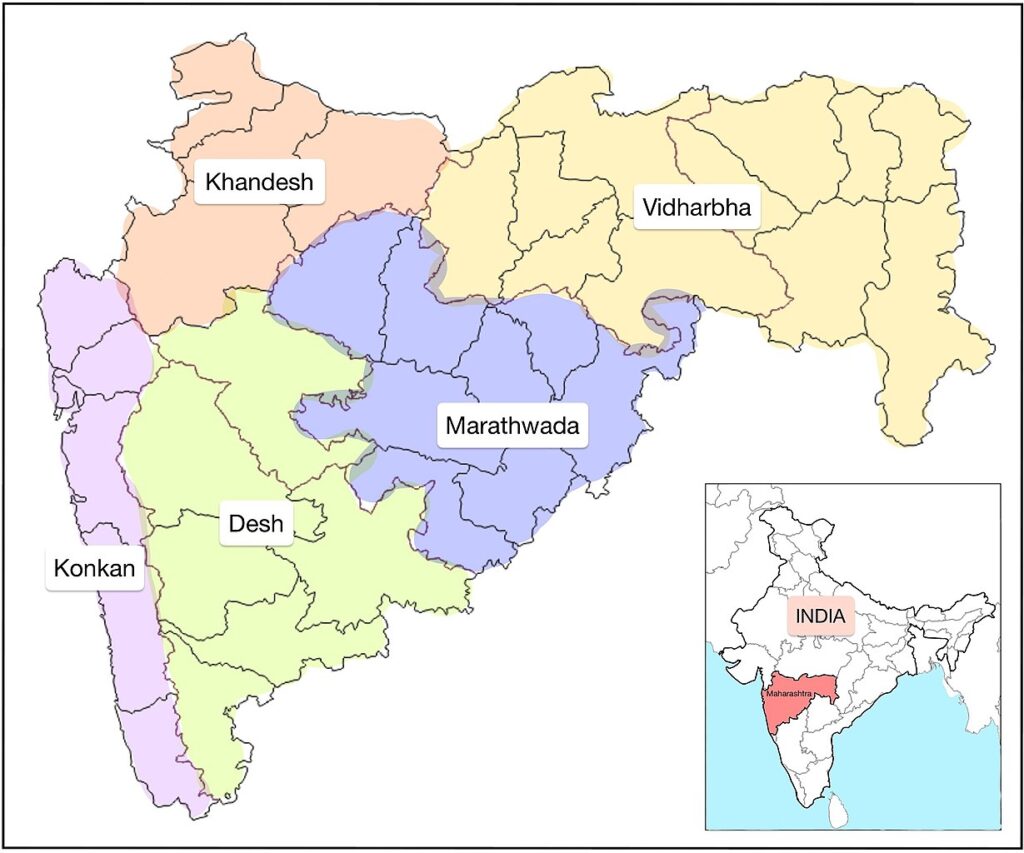
The coastal Konkan region with the Konkanastha Brahmins from here were renowned for their frugality. An area where vegetables were few in some seasons, and poverty was hidden. The art was to stretch a little into more! Pithla from this region is a light tempering of oil, cumin, curry leaves from the garden, and a green chilli or two cut into pieces. A few tablespoons of besan mixed with lots of water, or sour buttermilk, turmeric salt and sugar. If a coconut has been cracked open that day, garnished with some coconut scrapings and some freshly chopped coriander. Served as a sauce with warm rice or a rice bhakri and some ghee. The Pithla from this region is runny, and it is a struggle to keep the zoning in your thali for other items to have clean boundaries!
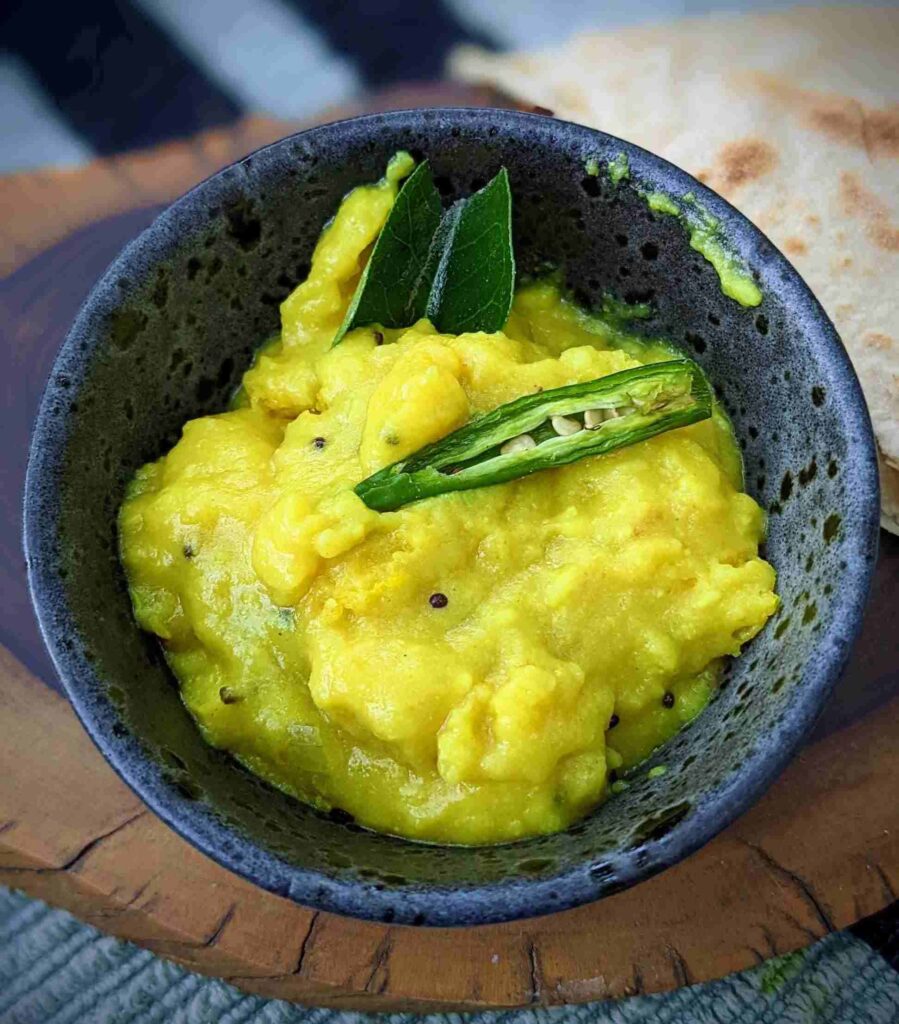
In the Desh or the plateau, crossing over the Sahyadri mountain range, Pithla is a bit of a racy affair! Deshastha Brahmins from this region, are reputed as unorganized and chaotic. ”Deshasthi kaarbhar” is the term used for this characteristic behaviour. The Pithla is just cooked so, not much order. finesse or system is followed. After the tadka with some generous oil, garlic, chillies, onions, and fresh coriander followed in an unplanned order, then the chickpea slurry, and salt. It is preferred a bit spicier and thicker of consistency than the Konkan version, but inevitably it all comes together as earthy as the people and finger-licking tasty too!
One of the Pithla recipes originating from the warrior class Maratha as well as the farming Mali community is Vatlya daliche pithle. Chana dal is soaked for a few hours then ground to a rough, grainy paste along with a few cloves of garlic and a green chilli. To a tempering made with a generous amount of oil, onions chopped in large cubes are added. Sautéd till they start to caramelize at the edges, in goes turmeric and red chilli powder, mixed through, then the ground chana dal is added. Sautéed on medium heat till the pithla is cooked to a lovely fragrant, grainy and nutty texture. Being on the drier side, whole wheat chapati is best to go with it. Or eaten in a bowl by itself with a squeeze of lime and crispy Sev as a topping.
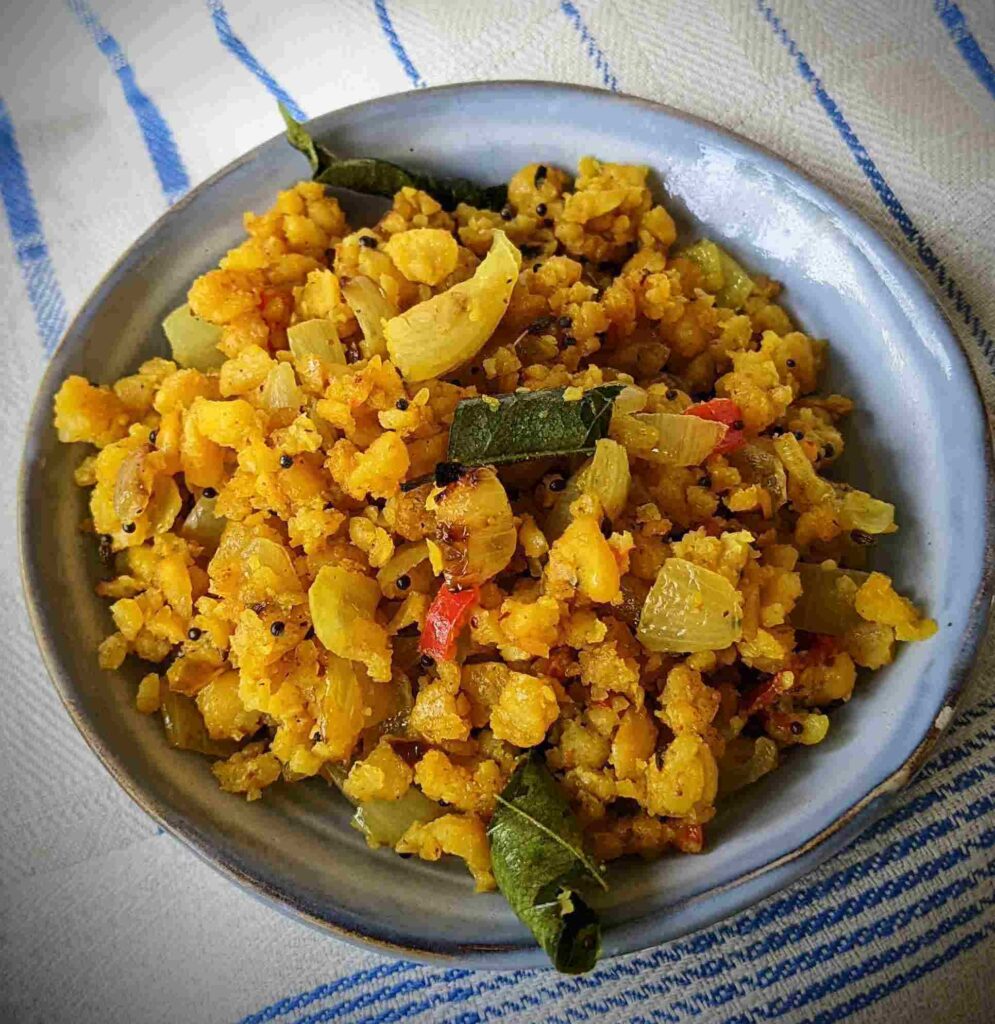
As you go to the Northern drier regions of Khandesh, where red chillies, purple-skinned aromatic garlic and spicy red onions are grown, sure enough, their Pithla celebrates these ingredients full on! You might find some boiled or fried peanuts added too for extra nuttiness. Pithla in this region is cooked in a lot of cold pressed peanut oil for an unctuousness and great mouth feel. A vibrant red peanut -garlic chutney and onion slices to accompany the meal is mandatory. Plus, some Khandeshi masala powder, especially when freshly pounded, is served with raw cold-pressed peanut oil with a pinch of salt as a sidekick.
Another version of Pithla from this region is made using flame-roasted green chillies, as well as flame-roasted and charred garlic and onions, roughly smashed with sea salt as a Thecha added to the hot oil. Then goes in the dry besan. This mixture is roasted till the besan is fragrant and nutty. Hot water is gradually added, covered and cooked to a lovely lumpy texture. Eaten with a jowar bhakri and a pungent salad made from raw onion mixed with salt, chilli flakes and peanut oil as an accompaniment.
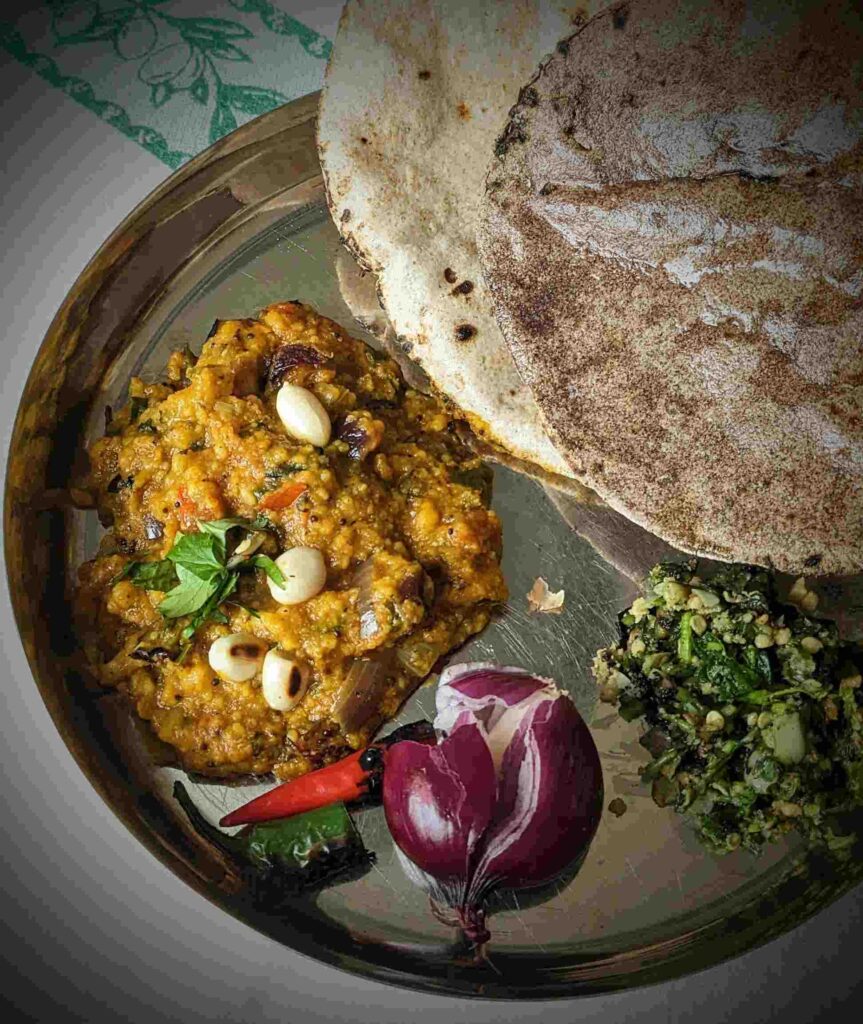
Nagpur in the Vidarbha/ Varhad region is the ultimate in Maharashtrian hospitality as well as a veritable regional treasure house of delicious local recipes. THE place for real foodies! If you have stayed as a guest for a long time, after having been treated to many delicious, spicy and sweet recipes, your host will cook for you Raavan Pithla (Raavan being the mythical demon-king from Sri Lanka). This is something no one is prepared for! A chilli -addict’s Walhalla.
The Raavan Pithla is made from – hold your breath- 1 cup oil, 1 cup besan- 1 cup Bhiwapuri (has GI tag)- also called Varhadi chilli powder. The chilli powder made from this special, hot chilli has to be slightly coarse. The resulting Pithla is hot, but the chickpea flour and the chilli powder, being slow-roasted in all that oil, acquires a very special flavour and texture. (Mind you, chickpea flour used to be stone-ground and thus had a nice texture, unlike the milled variety you get now). Some hot water is added gradually along with a little turmeric and salt. After being served on your plate, the host comes along with a “Jivant phodni”. A hot cast-iron ladle full of sizzling oil, golden fried garlic chunks and pieces of dried red chilli swimming in it. It is served with a dramatic flair and culinary pride, on the Raavan Pithla. A much-anticipated moment and a sensuous treat for all your senses! You just come alive with the drama and partake of the vibrancy of Nagpuri hospitality with every morsel.
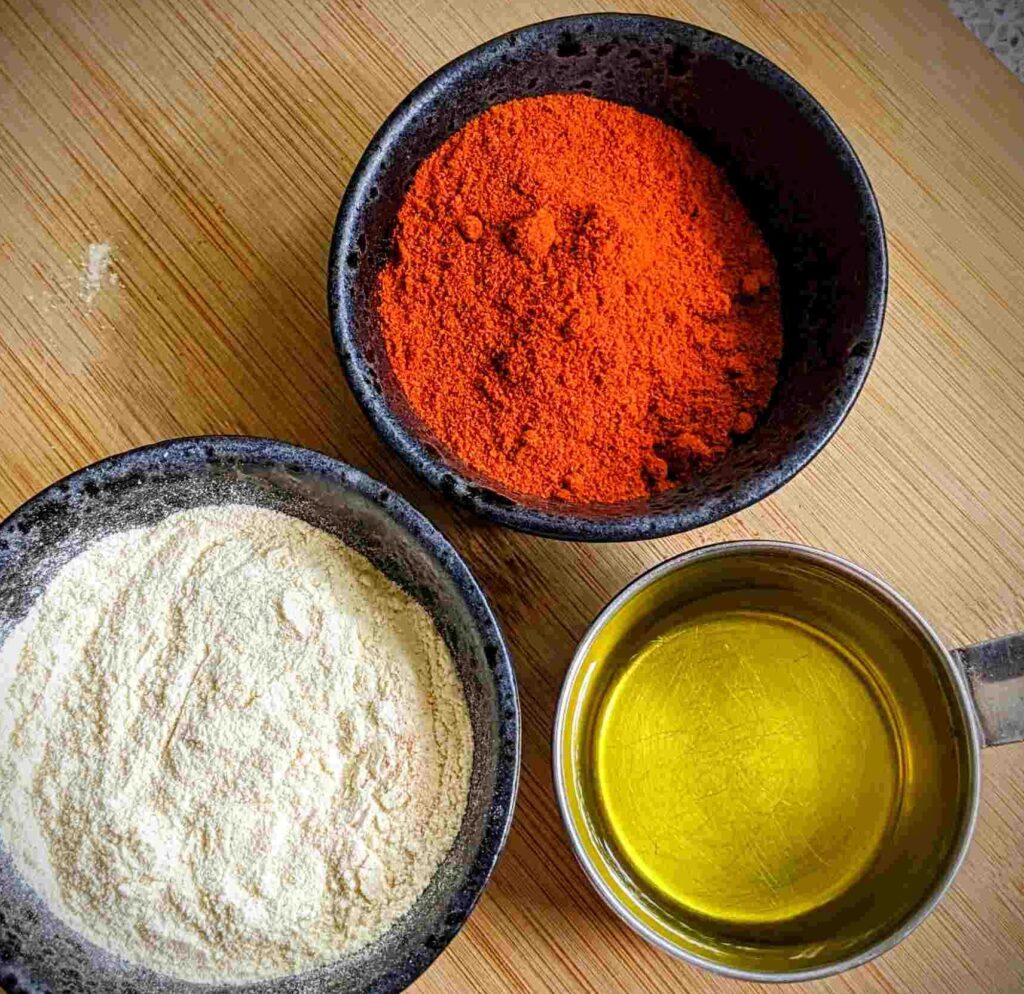

These are just a handful of Pithla variations. A cook is welcome to create one’s own combinations. The addition of seasonal vegetables like drumsticks, spinach or fenugreek leaves, boiled peanuts or fresh coconut slivers, adds seasonal interest to this humble dish.
Go ahead vegetarians and meat-eaters alike, give it a try, just dare, and I guarantee it will change your kitchen and your meals!
Leave a Response